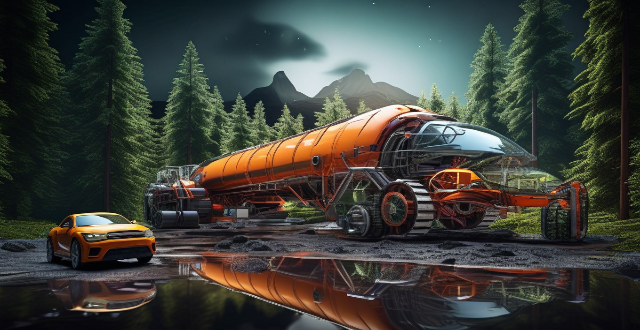The evolution of rocket technology has been a journey from liquid-fueled rockets to reusable launch vehicles, marked by significant milestones. The development of ICBMs during the Cold War laid the groundwork for space exploration technologies. Multistage rockets increased payload capacity and efficiency. Reusable rockets reduced costs and paved the way for sustainable space travel. Future prospects include advanced propulsion systems like ion thrusters and nuclear propulsion, promising faster transit times and more efficient energy use.

The Evolution of Rocket Technology in Space Exploration
Rocket technology has undergone a remarkable transformation since the early days of space exploration. From the humble beginnings of liquid-fueled rockets to the sophisticated reusable launch vehicles of today, the journey has been filled with significant milestones and breakthroughs. Let's delve into the key evolutions:
Early Liquid-Fueled Rockets
The initial steps towards modern rocketry were marked by the development of liquid-fueled rockets. These rockets used a combination of fuel and an oxidizer, both stored in liquid form, which when mixed and ignited produced thrust. Notable figures like Robert Goddard and Hermann Oberth made substantial contributions to this field.
Key Features:
- High Energy Output: Liquid hydrogen and liquid oxygen provided greater efficiency than solid fuels.
- Controllability: Thrust could be controlled by adjusting the flow rate of the propellants.
Intercontinental Ballistic Missiles (ICBMs)
During the Cold War era, the race between the US and the Soviet Union led to the development of ICBMs. These missiles, while designed for military purposes, laid the groundwork for future space exploration technologies.
Key Features:
- Long Range: Capable of intercontinental travel, showcasing advanced guidance systems.
- Rapid De laval noz(z) Development: Essential for overcoming atmospheric drag at high speeds.
Multistage Rockets
To achieve the escape velocity required to break free from Earth's gravity, multistage rocket designs were introduced. Each stage would burn its fuel and then detach, reducing the weight for subsequent stages.
Key Features:
- Increased Payload Capacity: More stages meant more overall thrust without increasing the weight of a single stage.
- Improved Efficiency: Each stage could be optimized for its specific flight regime.
Reusable Launch Vehicles (RLVs)
The concept of reusable rockets was pioneered by companies like SpaceX with their Falcon series of rockets. The ability to recover and reuse rocket components significantly reduced costs and increased the frequency of launches.
Key Features:
- Cost-Effective: Drastic reduction in launch costs by reusing expensive components.
- Sustainable Space Travel: Paving the way for regular space operations without excessive waste.
Future Prospects: Advanced Propulsion Systems
Looking ahead, advancements in propulsion systems such as ion thrusters, nuclear propulsion, and even conceptual ideas like antimatter drives are on the horizon. These technologies promise faster transit times and more efficient use of energy.
Key Features:
- Ion Thrusters: Offer precision control and long-term operation suitable for deep space missions.
- Nuclear Propulsion: Could provide tremendous amounts of energy for longer journeys through space.
In conclusion, the evolution of rocket technology has been a testament to human innovation and our ceaseless quest to explore beyond our planet. From the earliest liquid-fueled rockets to the potential of advanced propulsion systems, each step has brought us closer to understanding our universe and our place within it.